
Agriculture is an important engine for economic growth in Africa, but effective agricultural strategies to support rural development and poverty alleviation are scarce. State investment in the small-scale farming sector is minimal and the entrepreneurial family farm sector remains underrepresented. Meanwhile, large-scale land investments are advocated as means to bring...

The ways in which people obtain land in Uganda are changing fast. Land that used to be secured through inheritance, gifts or proof of long-term occupancy is now more commonly changing hands in the market. Those with wealth and powerful connections are frequently able to override local rules and gain...
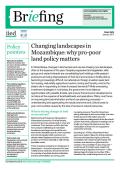
In Mozambique, changes in land access and use are shaping new landscapes, often at the expense of the poor. Despite progressive land legislation, elite groups and vested interests are consolidating land holdings while peasant producers are being dispossessed of their land and access to fertile plots is becoming increasingly difficult...

Senegal currently has a complex and poorly regulated system of land governance, which — combined with an urbanisation trend and increasing outsider interest — is leading to land privatisation and a consequent reduction in the availability of cultivable land for small producers. Young farmers, in particular, are struggling to gain...
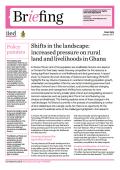
In Ghana 70 per cent of the population are smallholder farmers who depend on the land for their basic needs. Growing competition for this resource is having significant impacts on rural livelihoods and land governance. A recent study by Kwame Nkrumah University of Science and Technology (KNUST) highlights the key...
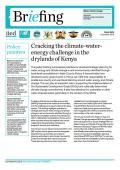
This policy briefing summarises priorities for devolved strategic planning for water, energy and climate change in arid environments, identified through local-level consultations in Isiolo County, Kenya. It demonstrates how devolved county governments in Kenya can fulfil their responsibility to enable sub-county and ward level planning around water, energy and climate...
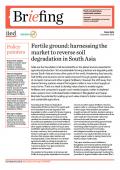
Soils are the foundation of all terrestrial life on the planet and are essential for agricultural production. Yet unsustainable farming practices are degrading soils across South Asia and many other parts of the world, threatening food security.
Soil fertility and structure can be vastly improved through greater applications of compost...

Governments in sub-Saharan Africa face a dilemma: how to reconcile pledges to feed fast-growing populations with forest conservation? Under Sustainable Development Goal 2 (end hunger, achieve food security etc), African countries aim to fully meet domestic food demand by 2030 — projected to be 70 percent higher than in 2010...

The Testing REDD+ in the Beira Landscape Corridor of Mozambique initiative closed in December. Over nearly four years, a consortium of public academic and research institutions, NGOs and social enterprises, supported by the Government of Norway, has explored what drives deforestation and forest degradation. The programme trialled four interventions: to...
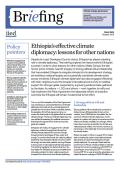
Despite its Least Developed Country status, Ethiopia has played a leading role in climate diplomacy. This briefing explores the factors behind Ethiopia’s success in order to draw lessons for other nations. Meles Zenawi, the late former prime minister, has left a legacy of strong political will and leadership that has...
